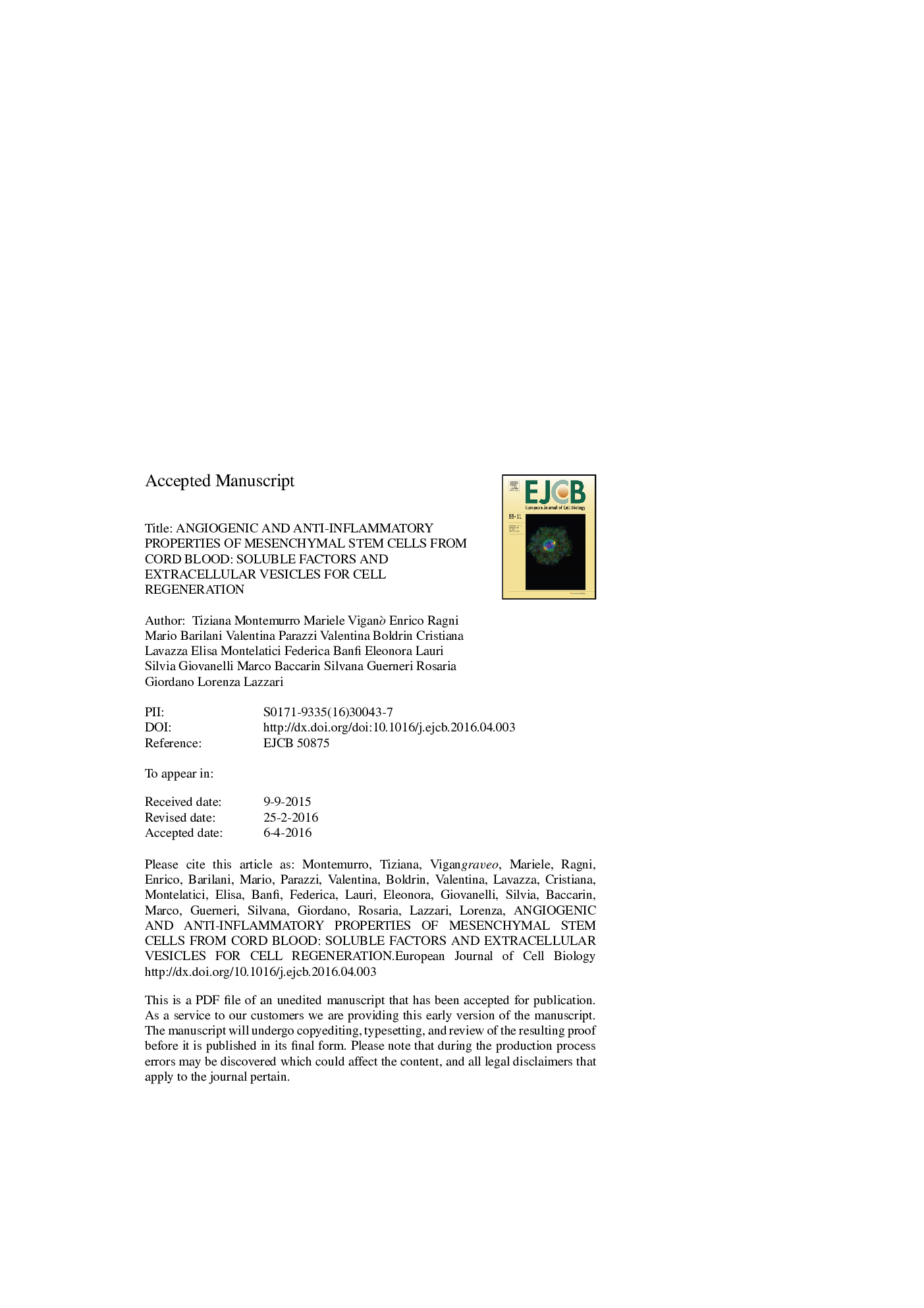| Article ID | Journal | Published Year | Pages | File Type |
|---|---|---|---|---|
| 8469773 | European Journal of Cell Biology | 2016 | 43 Pages |
Abstract
In a recent work, our group showed the existence of two distinct mesenchymal stem cell (MSC) subsets within human umbilical cord blood. One less proliferative and short-living (SL-CBMSC), the other with higher growth rate and long-living (LL-CBMSC), and therefore better suited for regenerative medicine applications. We examined whether LL-CBMSC possess peculiar paracrine properties able to affect angiogenesis or inflammatory processes. It was shown for the first time that pro-angiogenic, proliferation-stimulating and tissue repairing factors were released at high level not only as soluble cytokines, but also as mRNA precursors embedded in membrane vesicles. The combination of this primary (proteic factors interacting with surface receptors) and delayed (mRNA transferred and translated via vesicle fusion and cargo release) interaction in endothelial target cells resulted in strong blood vessel induction with the development of capillary-like structures. In addition, LL-CBMSC dynamically modulated their release of pro-angiogenic and anti-inflammatory factors in an in vitro model of damage. In conclusion, LL-CBMSC synthesize and secrete multiple factors that may be attuned in response to the status of the target cell, a crucial requisite when paracrine mechanisms are needed at onset of tissue regeneration.
Keywords
Related Topics
Life Sciences
Agricultural and Biological Sciences
Plant Science
Authors
Tiziana Montemurro, Mariele Viganò, Enrico Ragni, Mario Barilani, Valentina Parazzi, Valentina Boldrin, Cristiana Lavazza, Elisa Montelatici, Federica Banfi, Eleonora Lauri, Silvia Giovanelli, Marco Baccarin, Silvana Guerneri, Rosaria Giordano,
